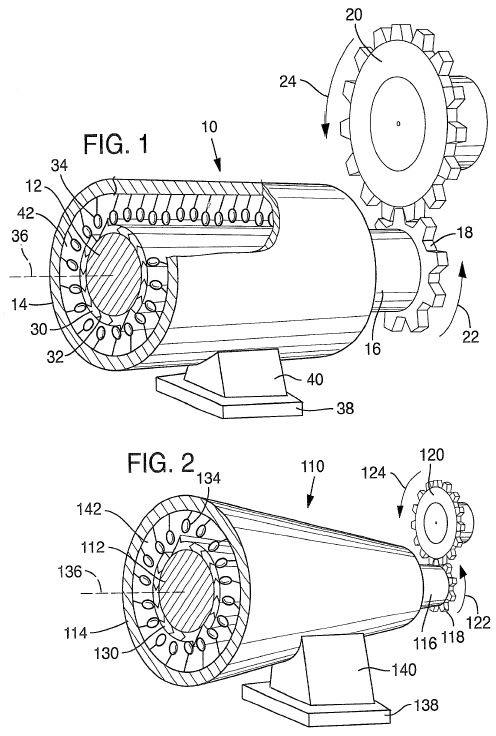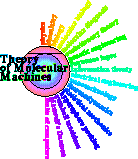Molecular Rotation Engine |

|
Molecular Rotation Engine |

|

Thomas D. Schneider and Ilya G. Lyakhov
"With imagination, we could use
or find the technologies that create energy without
destroying our planet"
---
British Prime Minister Tony Blair
address at a Labor Party conference in Brighton, England.
(CNN: 2001 Oct 2)
Imagine an efficient engine that runs on sugar!
Informal Description of the Invention: The molecules that make a muscle pull can be coated onto the inner surfaces of a rotating bearing to create a wheel that rotates itself. By nesting a series of such wheels, the outer edge of the wheel could be made to move at any desired speed. By making a longer cylinder, the power can be increased. The power source of the engine is ATP, so the fuel can be grown (to make sugar and then ATP) and the engine could be highly efficient. On a microscopic scale, the device could be used to power other nanotechnologies or it could be used as a sensor for cellular conditions. On a macroscopic scale the motor could be a pollution-free source of power. Because the motor does not produce any pollution, widespread use for transportation would reduce CO2 emissions responsible for global warming and could reduce diseases from air pollution such as emphysema and cancer. For example, a major component of gasoline is benzene, which is known to cause leukemia. This engine would eliminate exposure at the gas pump, automobile exhaust fumes and from working in oil or chemical companies.
Formal Description of Invention:
The present application describes
a molecular-based macroscopic rotating engine. The engine is constructed
of two cylinders, one inner and one outer whose inner surfaces are coated
with oriented mobility or contractile proteins. In the presence of ATP the
cylinders rotate relative to each other. Speed of relative rotation is
controlled by the concentration of ATP or by nesting a series of cylinders
inside each other. Power is controlled by adjusting the length of the
cylinders. One advantage of this technology over other macroscopic motors
is that it can be used to supply power to prosthetic implants and medical
devices without the drawbacks associated with conventional power sources.
Other advantages are that the motor operates at room temperature, fuels
can be prepared by growing sugar so the motor does not contribute to
carbon dioxide pollution and the waste products are biologically safe.
Inventors:
Thomas D. Schneider (NCI)
and Ilya G. Lyakhov
Patent Status:
DHHS Reference No. E-018-99/0 filed 03 Aug
1999
Portfolio:
Devices/Instrumentation - Therapeutics, methods
of using devices
PCT Application (PDF) |
U.S. Patent 7,349,834
|
![]()

Schneider Lab
origin: 1999 September 21
updated:
2016 Jan 07
![]()